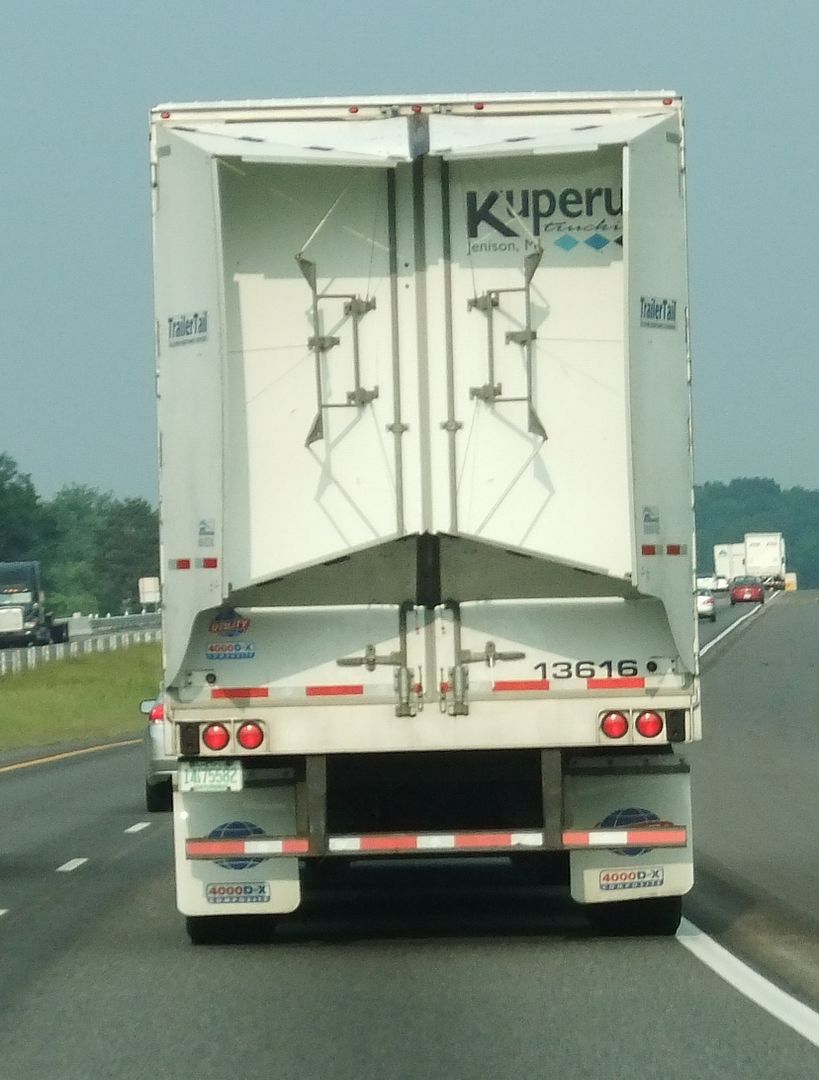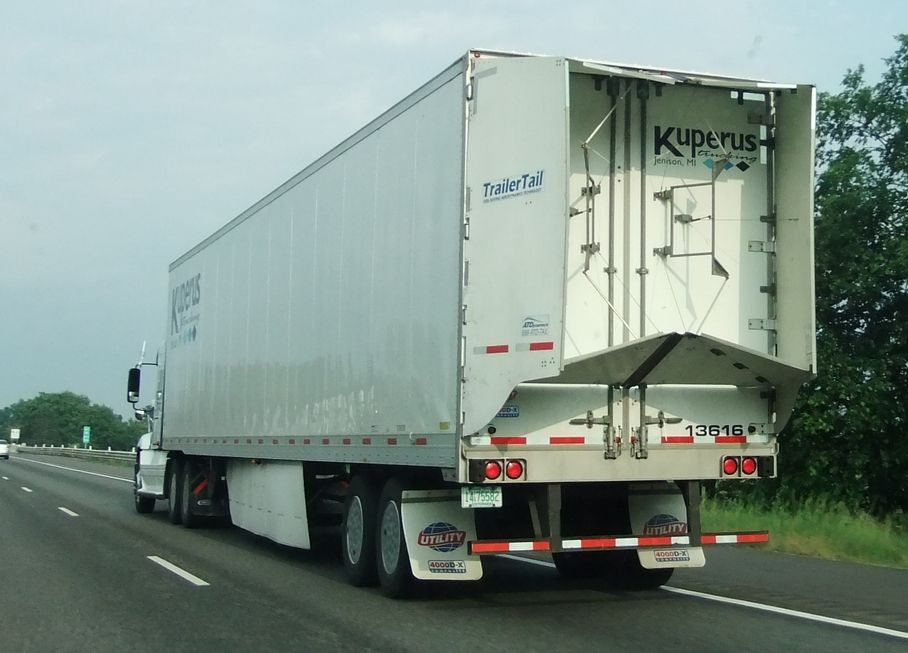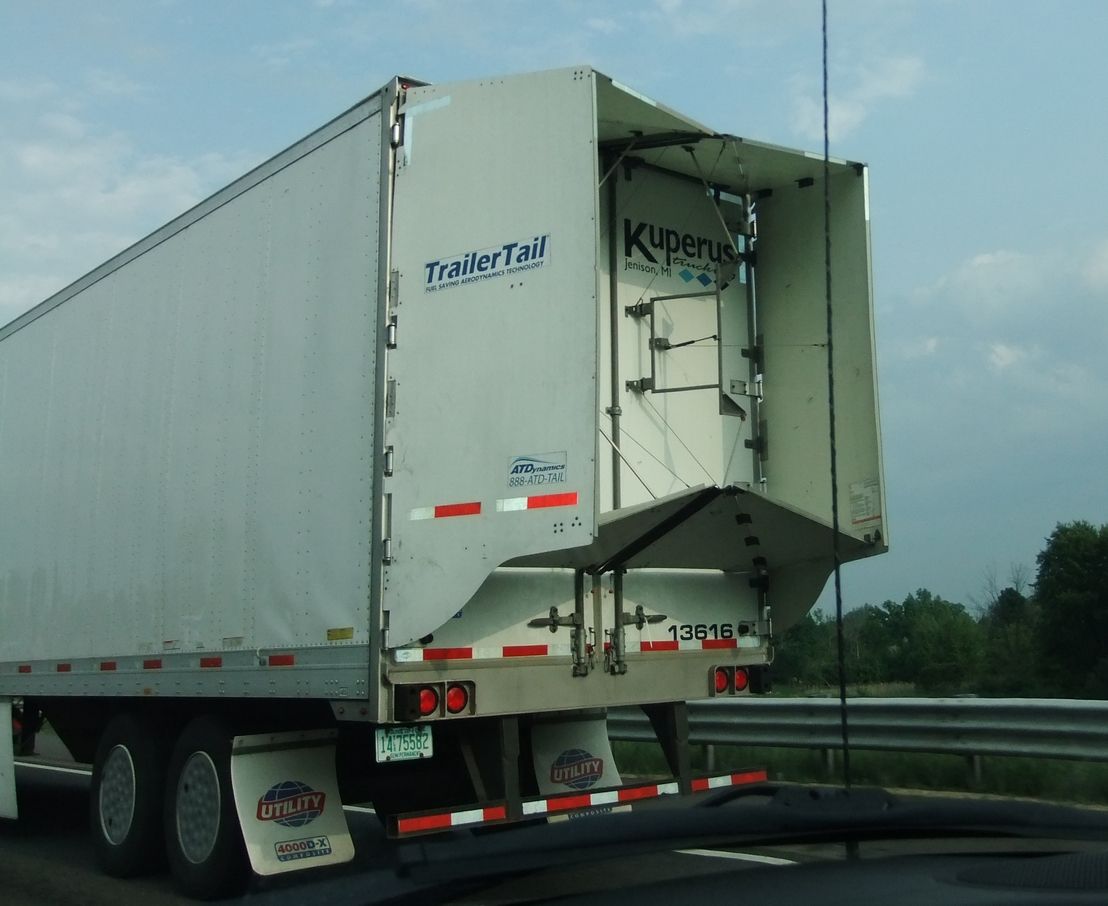 06-12-2013, 07:03 PM
06-12-2013, 07:03 PM
|
#11 (permalink)
|
|
Master EcoModder
Join Date: Jun 2009
Location: SC Lowcountry
Posts: 1,796
Thanks: 226
Thanked 1,354 Times in 711 Posts
|
.
Instead of removing the existing roof rack, use it to incorporate the boat tail by building the roof line up to make it the new highest point as far forward as possible using the template. Then only a small portion behind the rear of the vehicle will then stick out. Think of it as a hump back whale.
You could use the existing side rails to flex a piece of coroplast or 1/2" insulation board in between the side rails to the shape required, attaching it with zip ties. Then use EMT or aluminum pipe to build a frame behind the vehicle to finish the tail.
>
|
|
|

|
|
The Following User Says Thank You to redneck For This Useful Post:
|
|
 Today Today
|
|
|
|
 Other popular topics in this forum...
Other popular topics in this forum...
|
|
|
|
 06-12-2013, 07:48 PM
06-12-2013, 07:48 PM
|
#12 (permalink)
|
|
Not Doug
Join Date: Jun 2012
Location: Show Low, AZ
Posts: 12,307
Thanks: 7,309
Thanked 2,246 Times in 1,733 Posts
|
Quote:
Originally Posted by aerohead

In 1932,Oskar Tietgens and an assistant at Westinghouse Laboratories kinda did the same thing to a self-propelled railroad car.
They published Cd 0.08 for their creation.These early numbers may be taken with a grain of salt,as Hucho cautions,but are interesting nonetheless.
Love the 'Jeep.'  |
My sister had me drive her car, which really must have seemed like a good idea at the time. When I did not have passengers, I pulsed and glided on the freeway, and it seemed completely different than my car.
Her car weighs over 51% more than mine, with a 44% larger engine and 70% more horsepower, but has the same highway rating.

She laughs at the EPA rating, while I beat it easily.

It seemed to coast much further, so I tried to keep track, and it appeared to travel about .75 miles while going from 70 MPH to fifty.
How much of that would be inertia versus friction? Would my car coast in neutral worse just because of all-wheel drive? |
|
|

|
 06-12-2013, 09:19 PM
06-12-2013, 09:19 PM
|
#13 (permalink)
|
|
Not Doug
Join Date: Jun 2012
Location: Show Low, AZ
Posts: 12,307
Thanks: 7,309
Thanked 2,246 Times in 1,733 Posts
|
Quote:
Originally Posted by redneck

.
Instead of removing the existing roof rack, use it to incorporate the boat tail by building the roof line up to make it the new highest point as far forward as possible using the template. Then only a small portion behind the rear of the vehicle will then stick out. Think of it as a hump back whale.
You could use the existing side rails to flex a piece of coroplast or 1/2" insulation board in between the side rails to the shape required, attaching it with zip ties. Then use EMT or aluminum pipe to build a frame behind the vehicle to finish the tail.
|
At the moment I do not have access to a useful picture of a similar Forester, so I took my original boattail picture and put it back into the template machine. I need to redo it, first of all because that is not my car and I do not want weird differences throwing off my calculations, but I also realized that the picture was not level!
With the high point at the back of the roof, scaling the template to my car, that first vertical bar is 28.7" back and it only curves downward 3.5°, but if I make the front cross-member the new high point, it would curve 7° at that same point, and it would increase from there.
I know that everybody says to decrease the frontal area, not increase it, but I do not even see the point in doing a 4° Kammback.
If I extended my car three feet and brought in the roof 4°, the sides and bottom 3°, how much improvement would I see?
That would be 1 1/3" on top, 1" on the sides, and 1" on the bottom. My car is 68.3 inches wide, 65" tall, and the back of the bumper is 16" off of the ground.
First, will someone please tell me how to taper the sides and bottom?
Second, will someone please figure out how much improvement that would bring?
However much clearance I may have, I imagine that every bit of it is turbulent, so until I make it attach somewhere, I doubt the rest matters.
65x68.3=4,439.5 square inches
63.67x66.3=4,221.1 square inches, a 5.17% reduction. If that makes it 5.17% more aerodynamic, it would get 2.585% better mileage, although if the air is not attached, I will have completely failed.
How much is attached air worth? |
|
|

|
 06-12-2013, 11:52 PM
06-12-2013, 11:52 PM
|
#14 (permalink)
|
|
Master EcoModder
Join Date: Sep 2012
Location: Motor City
Posts: 282
Thanks: 0
Thanked 224 Times in 138 Posts
|
Phil had posted some Cd reduction vs. template percentages somewhere. I copied them and other info into a spreadsheet. Assuming a three sided, flat bottom tail, the transom reduction doesn't follow the Cd reduction. And suggests even a short tail has the potential to make some pretty substantial improvements.
% Template Transom reduction Cd reduction
0 0 0.0%
10 2.1% 23.2%
20 6.2% 38.7%
30 14.3% 50.8%
40 25.8% 60.2%
50 40.0% 66.8%
Crude math, lots of assumptions, blah, blah, blah....
|
|
|

|
|
The Following User Says Thank You to ennored For This Useful Post:
|
|
 06-13-2013, 03:32 AM
06-13-2013, 03:32 AM
|
#15 (permalink)
|
|
Not Doug
Join Date: Jun 2012
Location: Show Low, AZ
Posts: 12,307
Thanks: 7,309
Thanked 2,246 Times in 1,733 Posts
|
Quote:
Originally Posted by ennored

Phil had posted some Cd reduction vs. template percentages somewhere. I copied them and other info into a spreadsheet. Assuming a three sided, flat bottom tail, the transom reduction doesn't follow the Cd reduction. And suggests even a short tail has the potential to make some pretty substantial improvements.
% Template Transom reduction Cd reduction
0 0 0.0%
10 2.1% 23.2%
20 6.2% 38.7%
30 14.3% 50.8%
40 25.8% 60.2%
50 40.0% 66.8%
Crude math, lots of assumptions, blah, blah, blah....
|
Ah right. That!
I guess that making the air detach cleanly is worth 11.6% better MPG, because the improvement is huge, compared to the transom reduction!
I love math, especially when I am supposed to be doing something else (I wonder if I already did this somewhere):
% Template Transom reduction Cd reduction Additional increase
per segment per segment per segment
10 2.1% 23.2% 23.2%
20 4.1% 15.5% 12.6%
30 8.1% 12.1% 8.7%
40 11.5% 9.4% 6.2%
50 14.2% 6.6% 4.1%
Those are some diminishing returns! |
|
|

|
 06-13-2013, 07:12 AM
06-13-2013, 07:12 AM
|
#16 (permalink)
|
|
Master EcoModder
Join Date: Jul 2010
Location: Belgium
Posts: 4,683
Thanks: 178
Thanked 652 Times in 516 Posts
|
Quote:
Originally Posted by Xist

How much of that would be inertia versus friction? Would my car coast in neutral worse just because of all-wheel drive?
|
The more mechanical drag it has, the worse it'll coast of course.
Less weight means less coasting, too.
The added energy you get from the extra weight, more than makes up for the increased rolling resistance due to the same weight.
My li'l VW up! and the 400kg heavier (!) Volvo V50 have the same Cd - 0.32 - but on the downhill in a tunnel on my commute, the V50 gained speed easily whereas the up! hardly picks up a few kph when coasting.
The up! keeps feeding in 1.1 kg/100km CNG when on CC @ 100 kph.
Idle while coasting down is 0.4 kg/100km.
The V50 would cut the fuel off completely and still pick up a few kph despite the CC.
The up! shines on the uphill part though 
With the up! I'm not at the optimal tyre pressure yet, but so far, all coasting distances seem to be quite a bit shorter.
__________________
Strayed to the Dark Diesel Side

|
|
|

|
 06-13-2013, 09:26 AM
06-13-2013, 09:26 AM
|
#17 (permalink)
|
|
Master EcoModder
Join Date: Jul 2011
Location: Ann Arbor, Michigan
Posts: 4,211
Thanks: 141
Thanked 2,825 Times in 1,982 Posts
|
You have made jokes/observations comparing the boxy Forester to a semi-truck, why not go that route?
Automobile 2 - Odds And Ends Photos by kach22i | Photobucket



I'm sure you can come up with something more attractive, perhaps in smoked acrylic.
__________________
George
Architect, Artist and Designer of Objects
2012 Infiniti G37X Coupe
1977 Porsche 911s Targa
1998 Chevy S-10 Pick-Up truck
1989 Scat II HP Hovercraft
You cannot sell aerodynamics in a can............
Last edited by kach22i; 01-09-2014 at 11:10 AM..
|
|
|

|
|
The Following User Says Thank You to kach22i For This Useful Post:
|
|
 06-13-2013, 05:24 PM
06-13-2013, 05:24 PM
|
#18 (permalink)
|
|
Master EcoModder
Join Date: Jan 2008
Location: Sanger,Texas,U.S.A.
Posts: 16,514
Thanks: 24,517
Thanked 7,436 Times in 4,817 Posts
|
coasting
Quote:
Originally Posted by Xist

My sister had me drive her car, which really must have seemed like a good idea at the time. When I did not have passengers, I pulsed and glided on the freeway, and it seemed completely different than my car.
Her car weighs over 51% more than mine, with a 44% larger engine and 70% more horsepower, but has the same highway rating.

She laughs at the EPA rating, while I beat it easily.

It seemed to coast much further, so I tried to keep track, and it appeared to travel about .75 miles while going from 70 MPH to fifty.
How much of that would be inertia versus friction? Would my car coast in neutral worse just because of all-wheel drive? |
Every vehicles coasting will be affected by:
*Mass
*power absorption coefficient of the tires
*Mechanical efficiency(unloaded)of the entire powertrain
*Frontal area
*Coefficient of aerodynamic drag
And that's not to mention
*tire pressure
*road surface
*straightness of the road
*curvature of the road
*Grade of the road
*State of ambient equilibrium lubricant temperature
*State of ambient equilibrium tire temperature
*weather: (temp,humidity,barometric (station)pressure,wind,wind direction,precipitation)
-------------------------------------------------------------------------
We'd need to know everything we could about everything mentioned.
__________________
Photobucket album: http://s1271.photobucket.com/albums/jj622/aerohead2/
|
|
|

|
|
The Following User Says Thank You to aerohead For This Useful Post:
|
|
 06-14-2013, 03:09 AM
06-14-2013, 03:09 AM
|
#19 (permalink)
|
|
Not Doug
Join Date: Jun 2012
Location: Show Low, AZ
Posts: 12,307
Thanks: 7,309
Thanked 2,246 Times in 1,733 Posts
|
Quote:
Originally Posted by aerohead

Every vehicles coasting will be affected by:
*Mass
*power absorption coefficient of the tires
*Mechanical efficiency(unloaded)of the entire powertrain
*Frontal area
*Coefficient of aerodynamic drag
And that's not to mention
*tire pressure
*road surface
*straightness of the road
*curvature of the road
*Grade of the road
*State of ambient equilibrium lubricant temperature
*State of ambient equilibrium tire temperature
*weather: (temp,humidity,barometric (station)pressure,wind,wind direction,precipitation)
-------------------------------------------------------------------------
We'd need to know everything we could about everything mentioned.
|
Wow!
Well, I checked my tires the other day, they were at 40 PSI. I cannot imagine that hers were that high.
I drove a total of three miles on the freeway today. My glides seemed to last about .4 miles, but the ground was not level. |
|
|

|
 06-14-2013, 05:10 AM
06-14-2013, 05:10 AM
|
#20 (permalink)
|
|
Not Doug
Join Date: Jun 2012
Location: Show Low, AZ
Posts: 12,307
Thanks: 7,309
Thanked 2,246 Times in 1,733 Posts
|
Okay, I need to carefully take a picture during the day and do this again, but I think this is pretty close: 
|
|
|

|
|